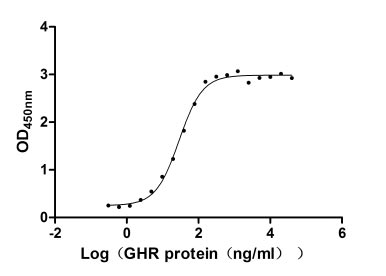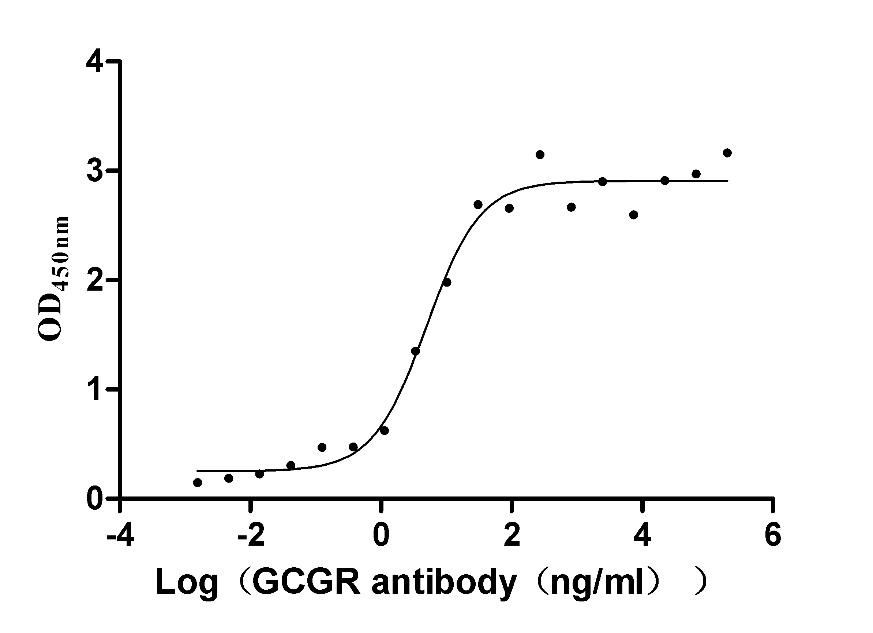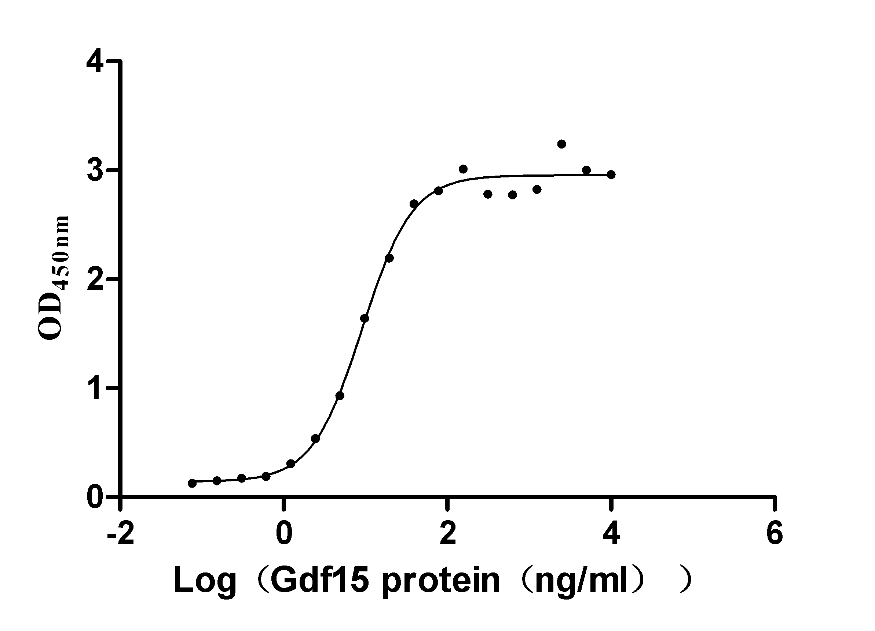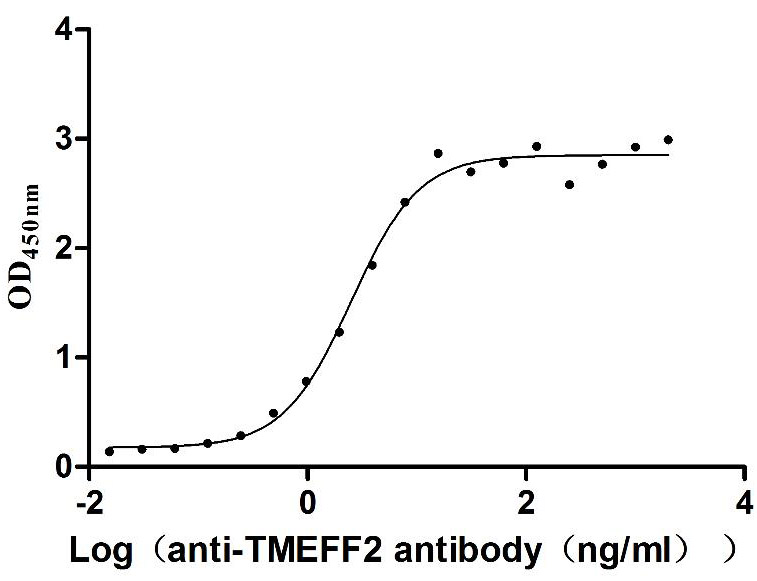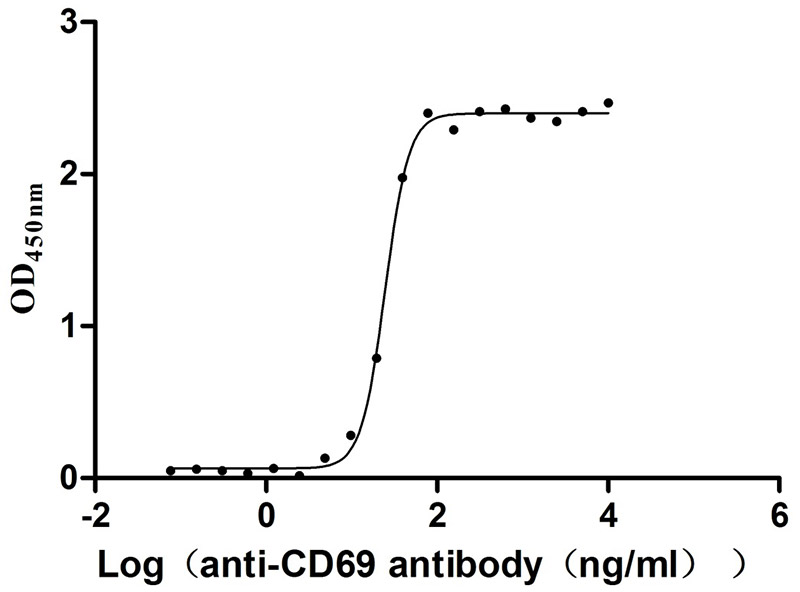Recombinant Human Ceramide glucosyltransferase (UGCG), partial
-
货号:CSB-YP619088HU1
-
规格:
-
来源:Yeast
-
其他:
-
货号:CSB-EP619088HU1
-
规格:
-
来源:E.coli
-
其他:
-
货号:CSB-EP619088HU1-B
-
规格:
-
来源:E.coli
-
共轭:Avi-tag Biotinylated
E. coli biotin ligase (BirA) is highly specific in covalently attaching biotin to the 15 amino acid AviTag peptide. This recombinant protein was biotinylated in vivo by AviTag-BirA technology, which method is BriA catalyzes amide linkage between the biotin and the specific lysine of the AviTag.
-
其他:
-
货号:CSB-BP619088HU1
-
规格:
-
来源:Baculovirus
-
其他:
-
货号:CSB-MP619088HU1
-
规格:
-
来源:Mammalian cell
-
其他:
产品详情
-
纯度:>85% (SDS-PAGE)
-
基因名:UGCG
-
Uniprot No.:
-
别名:UGCG; Ceramide glucosyltransferase; GLCT-1; Glucosylceramide synthase; GCS; UDP-glucose ceramide glucosyltransferase; UDP-glucose:N-acylsphingosine D-glucosyltransferase
-
种属:Homo sapiens (Human)
-
蛋白长度:Partial
-
蛋白标签:Tag type will be determined during the manufacturing process.
The tag type will be determined during production process. If you have specified tag type, please tell us and we will develop the specified tag preferentially. -
产品提供形式:Lyophilized powder
Note: We will preferentially ship the format that we have in stock, however, if you have any special requirement for the format, please remark your requirement when placing the order, we will prepare according to your demand. -
复溶:We recommend that this vial be briefly centrifuged prior to opening to bring the contents to the bottom. Please reconstitute protein in deionized sterile water to a concentration of 0.1-1.0 mg/mL.We recommend to add 5-50% of glycerol (final concentration) and aliquot for long-term storage at -20℃/-80℃. Our default final concentration of glycerol is 50%. Customers could use it as reference.
-
储存条件:Store at -20°C/-80°C upon receipt, aliquoting is necessary for mutiple use. Avoid repeated freeze-thaw cycles.
-
保质期:The shelf life is related to many factors, storage state, buffer ingredients, storage temperature and the stability of the protein itself.
Generally, the shelf life of liquid form is 6 months at -20°C/-80°C. The shelf life of lyophilized form is 12 months at -20°C/-80°C. -
货期:Delivery time may differ from different purchasing way or location, please kindly consult your local distributors for specific delivery time.Note: All of our proteins are default shipped with normal blue ice packs, if you request to ship with dry ice, please communicate with us in advance and extra fees will be charged.
-
注意事项:Repeated freezing and thawing is not recommended. Store working aliquots at 4°C for up to one week.
-
Datasheet :Please contact us to get it.
相关产品
靶点详情
-
功能:Catalyzes at the cytosolic surface of the Golgi, the initial step of the glucosylceramide-based glycosphingolipid/GSL synthetic pathway, the transfer of glucose from UDP-glucose to ceramide to produce glucosylceramide/GlcCer. Glucosylceramide is the core component of glycosphingolipids/GSLs, amphipathic molecules consisting of a ceramide lipid moiety embedded in the outer leaflet of the membrane, linked to one of hundreds of different externally oriented oligosaccharide structures. Glycosphingolipids are essential components of membrane microdom...显示更多
-
基因功能参考文献:
- Studies show a connection between UDP-glucose ceramide glucosyltransferase (UGCG) and multidrug resistance protein 1 (MDR1) overexpression and multidrug resistance development [Review]. PMID: 29409484
- Results suggest that the changes of DNA methylation status of the glucosylceramide synthase (GCS) promoter correlates with multidrug resistance in breast cancer. PMID: 27191984
- Glucosylceramide synthase upregulation is associated with sorafenib resistance in hepatocellular carcinoma. PMID: 26811497
- GCS was upregulated in colorectal carcinoma tissues compared to control tissues. PMID: 25535133
- We found upregulation of specific sphingolipid enzymes, namely sphingomyelin synthase 1 (SMS1), sphingomyelinase 3 (SMPD3), and glucosylceramide synthase (GCS) in the endometrium of endometriotic women. PMID: 24960545
- Our data demonstrates a correlation between the expression of the GCS protein and ER-positive/HER-2 negative breast cancer PMID: 24456584
- our work indicates that some UGCG polymorphisms are modifying factors in the severity of GD. PMID: 23913449
- GCS was upregulated in PTCs and might be an independent factor affecting prognosis. PMID: 24342307
- Glucosylceramide synthase mRNA were reduced by 62%. PMID: 24510559
- The results thus show that ARF6 regulates neuronal differentiation through an effect on glucosylceramide synthase and glucosylceramide levels. PMID: 23555901
- DOX could modulate the expression of GCS through the Sp1 site of GCS promoter in ERalpha-positive breast cancer cells PMID: 23133636
- Ceramide glycosylation catalyzed by glucosylceramide synthase is important for cancer stem cells in drug resistance and tumorigenesis. PMID: 22936806
- Data indicate that a high expression of glucosylceramide synthase (GCS) seemed to be an indicator of poor prognosis. PMID: 20843709
- The s conclude that hepatitis C virus proteins, especially NS5A and NS5B, have positive effects on the expression of human GlcT-1. PMID: 22270805
- GlcT-1 is up-regulated at the mRNA and protein levels during the course of U937 differentiation, resulting in increased amounts of GlcCer. PMID: 21558327
- Data show that nilotinib induces apoptosis through upregulating ceramide synthase genes and downregulating SK-1 in CML cells in addition to inhibition of BCR/ABL. PMID: 21756066
- GCS overexpression was highly associated with ER-positive and HER2-positive breast cancer with metastasis. PMID: 21617856
- Data show that GCS silencing increased the levels of phosphorylated p53 and p53-responsive genes. PMID: 21278235
- inhibition of the GCS gene affects the expression of MDR1 mRNA and P-gp function. PMID: 21380926
- GCSshRNA could efficiently suppress GCS and MDR1 expression in vitro and in vivo and these findings may be used as one of the methods to reverse multidrug resistance in breast cancer PMID: 19693666
- study demonstrates, for the first time, that GCS upregulates MDR1 expression modulating drug resistance of cancer. GSLs, in particular globo series GSLs mediate gene expression of MDR1 through cSrc and beta-catenin signaling pathway PMID: 20540746
- Positive correlation was detected between the expression of GCS and MDR1 mRNA in K562/A02 cells and MDR1 mRNA expression was down regulated after silencing the GCS gene expression. PMID: 20533270
- serve as negative regulator for ceramide PMID: 11915344
- Glucosylceramide synthase and its functional interaction with RTN-1C regulate chemotherapeutic-induced apoptosis in neuroepithelioma cells. PMID: 12873973
- inhibition of glucosylceramide synthase led to increased CER galactosylation and protected U937 and HL-60 cells from DNR-induced apoptosis PMID: 14766899
- glucosylceramide synthase is not solely responsible for drug resistance in cancer cells PMID: 15263008
- p-gp confers resistance to ceramide-induced apoptosis, with modulation of the ceramide-glucosylceramide pathway GCS making a marked contribution to this resistance PMID: 15661399
- 10 genes were down-regulated following treatment of the T-ALL cells with 0.15 and 1.5 microg/mL of metal ores at 72 h. Transferase activity, transferring glycol groups PMID: 15747776
- the reticulon family member RTN-1C has been expressed and purified in Escherichia coli and its molecular structure has been analysed by fluorescence and Circular Dichroism spectroscopy PMID: 16500619
- it is suggested that a high level of GCS in leukemia is possible contributed to multidrug resistance of leukemia cells. PMID: 17709137
- Western analysis for glucosylceramide synthase showed a significant decrease in Alzheimer disease brain consistent with the hypothesis that enzyme dysfunction contributes to neuronal decay. PMID: 18155680
- High glucosylceramide synthase is associated with breast cancer. PMID: 18560890
收起更多
-
亚细胞定位:Golgi apparatus membrane; Multi-pass membrane protein.
-
蛋白家族:Glycosyltransferase 2 family
-
组织特异性:Found in all tissues examined.
-
数据库链接:
HGNC: 12524
OMIM: 602874
KEGG: hsa:7357
STRING: 9606.ENSP00000363397
UniGene: Hs.304249


